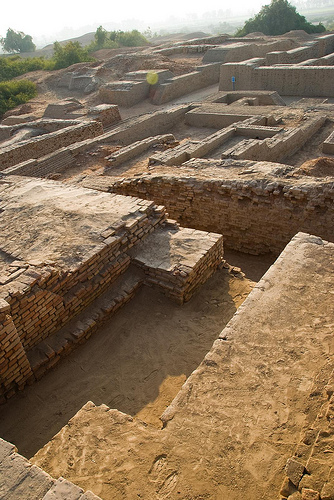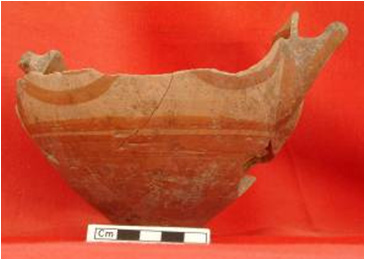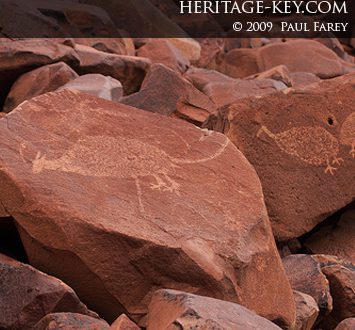Maya writing at a glance has a lot in common with Egyptian hieroglyphics. It’s a similarly baffling system of detailed glyphs, often found carved on stone stelae, altars, wooden lintels and roof beams, painted on ceramic vessels or written in a type of book made of bark paper called a codex. Early European explorers of Maya lands in the 18th and 19th centuries agreed, and often referred to Maya writing as “hieroglyphics” or “hieroglyphs”, despite the fact that it has no relation at all to its Egyptian equivalent.
In reality, Maya writing is a complex and highly individual mix between logographic and syllabic writing systems that not only represents the most advanced script used in the New World, but also the only Pre-Columbian writing system, which is known to completely represent its culture’s spoken language. Deciphering it was an epic undertaking that has been called “perhaps the greatest of all archeological detective stories”. Although Maya writing died out centuries ago, unlike ancient Egyptian, distant descendents of the language are still spoken today in some communities in Central America, and it may yet make a comeback in its text form.
Origins
The earliest examples of an identifiably-Maya script date back to around 200-350 BC, during the Pre-Classic period (some experts speculate that its origins date back even further still). It was preceded by several other writing systems which had developed in Mesoamerica, such as those practiced by the Zapotecs and the Olmecs. The influence these systems had on Maya script is debated, because they largely remain undeciphered. But it’s widely agreed that the Olmec was Maya writing’s most likely precursor, if it had one at all.
Maya was a written language much more complete and complex than any other practiced in the ancient Americas. It peaked during the Classical period, from around 250-900 AD, and remained in constant use right up until the 16th century AD and the arrival of the Spanish.
The Spanish Conquest and the Burning of the Codices
Deciphering Maya writing has proven a long and laborious process, mainly because such a deliberate effort was made to destroy it in the 16th and 17th centuries by the conquering Spanish. Zealous Spanish priests such as Bishop Diego de Landa despised the Maya religion, which they saw as pagan idolatry, and set about eradicating anything that appeared to propagate it. They burned almost every single one of the detailed codices that the Maya had written in an effort to convert them to Christianity, effectively ending the Mesoamerican tradition of literacy in their native script.
Only four examples survive relatively intact in the present day – the Madrid, Dresden, Paris and Grolier codices. Their names derive from the cities in which they surfaced, after being smuggled home by curious Spaniards. Mercifully, examples of Maya writing inscribed on more robust artefacts – such as stone monuments, lintels, stelae and ceramic pottery – fared better. At a rough estimate, in excess of 10,000 individual texts have so far been recovered from such sources.
Structure
As already mentioned, the script was logosyllabic – a mix between logographic and syllabic systems. Symbols (glyphs or graphemes) could be used as either logograms or syllables. In the course of the deciphering of the Maya hieroglyphic script, it became evident that it was a fully functioning writing system in which it was possible to express any sentence of the spoken language unambiguously.
The script had a complete syllabary (although not all possible syllables have yet been identified), and the Maya scribe would have been able to write anything out phonetically, syllable by syllable, using these symbols. It had more than a thousand different glyphs in total, although a few are variations of the same sign or meaning, and many appear only rarely or are confined to particular localities. No more than around 500 glyphs were in use at any one time.
Deciphering Maya Writing
How do we know so much about Maya writing? It’s largely because of incredible breakthroughs made in deciphering texts in the late 20th century. Unlike the Rosetta Stone, which essentially unlocked the secrets of Egyptian hieroglyphs in one go, the Maya script had to be unpicked gradually – over the course of 400 years – by a long series of hunches and tantalising insights, as well as false leads, blind alleys, and heated disagreements among scholars.
The Spanish in the 16th and 17th centuries – for all their antipathy towards Maya writing – were the first to try and crack the code, to little avail. Eccentric French polymath Constantine Rafinesque fared better in 1832 when, using the Dresden Codice, he managed to accurately figure out the Maya system of counting. German Ernst Förstemann in 1880, and Englishmen Alfred Maudsley and Eric Thompson – working in the 1880s and 1930s respectively – all advanced theories on Maya writing, some of which resulted in big steps, others big missteps. It was a Russian linguist – Yuri Knorosov – who in 1952 made what would be a key discovery, when he determined that the individual glyphs were phonetic sounds, not individual letters or whole words.
It allowed the most significant breakthrough of them all in 1981, with a brilliant discovery by David Stuart, now a leading linguistic and epigrapher, then just out of high school and the youngest-ever recipient of a MacArthur “genius” grant. He completed Knorosov’s phonetic decipherment by figuring out that individual Maya words could be written in multiple ways using different symbols for the same sounds. Gradually, the glyphs began to speak again, a process that accelerated enormously in the second half of the 20th century and continues to yield new information.
Maya Writing Today
Modern scholars are now able to read practically every Maya text in existence, and as a consequence are able to make massive leaps in their understanding of Maya traditions and culture. It has also sparked a drive by modern day Maya speakers – most of whom write in the Roman script – to attempt to relearn their forbears’ script and bring it back to life.
At least two major Mayan languages have been confidently identified in texts, with at least one more probable. An archaic language variety known as Classic Maya predominates, particularly in the Classic period inscriptions of the southern and central lowland areas. This language is most closely related to the Ch’olan branch of the language family, modern descendants of which include Ch’ol, Ch’orti’ and Chontal. The ancestor of the main surviving Yucatec language, as well as the Tzeltalan language – whose modern descendants are Tzeltal and Tzotzil – are also evident, alongside some other possible regional dialects.
Maya descendents now teach the written language to one another in workshops, while Maya schoolchildren are able to learn the glyphs at the same time as they learn about their ancestors. Maya writing may soon live again.
Codex copy picture (top) by Josh Kellogg; Copán stele picture (bottom) by Janine D. All rights reserved.



